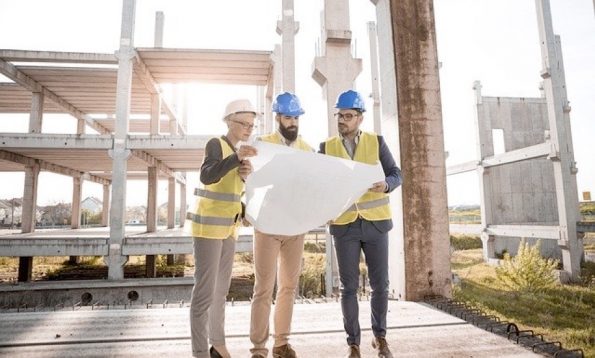What Construction Companies Need To Know About Accommodating Pedestrians
Residential and commercial construction, especially in dense areas, often has to coexist with pedestrian traffic. Construction companies are responsible for clearly communicating hazards to the general public and providing alternative paths for foot traffic that are as useful as the paths active construction projects may impede. Ahead, review the standards that construction companies need to meet for protecting pedestrians in construction projects, and how to put those standards into practice.
Design With Accessibility in Mind
When planning pedestrian management strategies, it’s especially important to keep in mind that construction companies are required by law to accommodate the needs of vulnerable populations. There’s no way to know if nearby pedestrians have visual or hearing impairments before a problem occurs, so accessibility should be a priority from the earliest planning stages. The Americans with Disabilities Act describes specific requirements for pedestrian routes, which must be:
- Smooth, continuous hard surfaces that permit the use of assistive devices
- Either at least five feet wide or supplemented with a five-foot square passing area every 200 feet
- Integrated with audible information or barriers detectable with a cane to accommodate visually impaired pedestrians
Plan for Pedestrians Before Breaking Ground
According to the Manual on Uniform Traffic Control Devices, if a pedestrian path is disrupted in construction projects, the firm responsible must offer “a convenient and accessible path that replicates as nearly as practical the most desirable characteristics of the existing sidewalk(s) or footpath(s).”
In effect, this means that construction firms can’t eliminate pedestrian walkways without providing similar options. Companies should make a good faith effort to delineate safe and unsafe areas in clear language, using tools like signs, cones, temporary fencing, and barricade tapes that serve to describe any hazards that may be present. Be sure to choose appropriate color coding to signify the level of danger to both workers and pedestrians and provide informative signs that detail what personal protective equipment is required to enter the area if ingress is permitted.
With pedestrian deaths increasing across the U.S. in recent years, advocacy groups are on high alert for reports of injuries or deaths. As a result, companies should use whatever safety tools
are deemed necessary to ensure there can be no reasonable expectation that pedestrians were unaware of hazards.
Solving Pedestrian Route Planning Problems
Pedestrian routes are more difficult to provide in areas where existing construction is dense, or several projects are in progress at the same time. In these cases, it’s important to communicate with workers about their responsibilities for preserving pedestrian and disability access. Ensure that workers park both personal vehicles and construction equipment in designated zones that do not block pedestrian access. For work zones in highly trafficked urban areas, consider investing in additional training for management and planning personnel, or seeking the advice of a consultant who specializes in accommodating ADA and MUTCD code requirements.
Efforts to accommodate pedestrians can be made more effective by involving local businesses who will be directly impacted by construction. Active work zones can have a negative effect on pedestrian-accessible businesses, and every effort should be made to mitigate the effect of construction on commerce. Providing channeling routes with overhead protection and traffic guards allows customers on foot to visit their favorite businesses safely, and supporting the local business community encourages their cooperation with construction, which may be essential for future projects, especially those with a public comment period.
While it can be inconvenient and at times expensive for construction companies to plan for pedestrian access routes, doing so can prevent injury and death, head off costly lawsuits, and foster goodwill among residents and businesses. Planning for construction projects increases the likelihood that future projects will be permitted successfully. Accommodating stakeholders is an essential part of good business citizenship.


